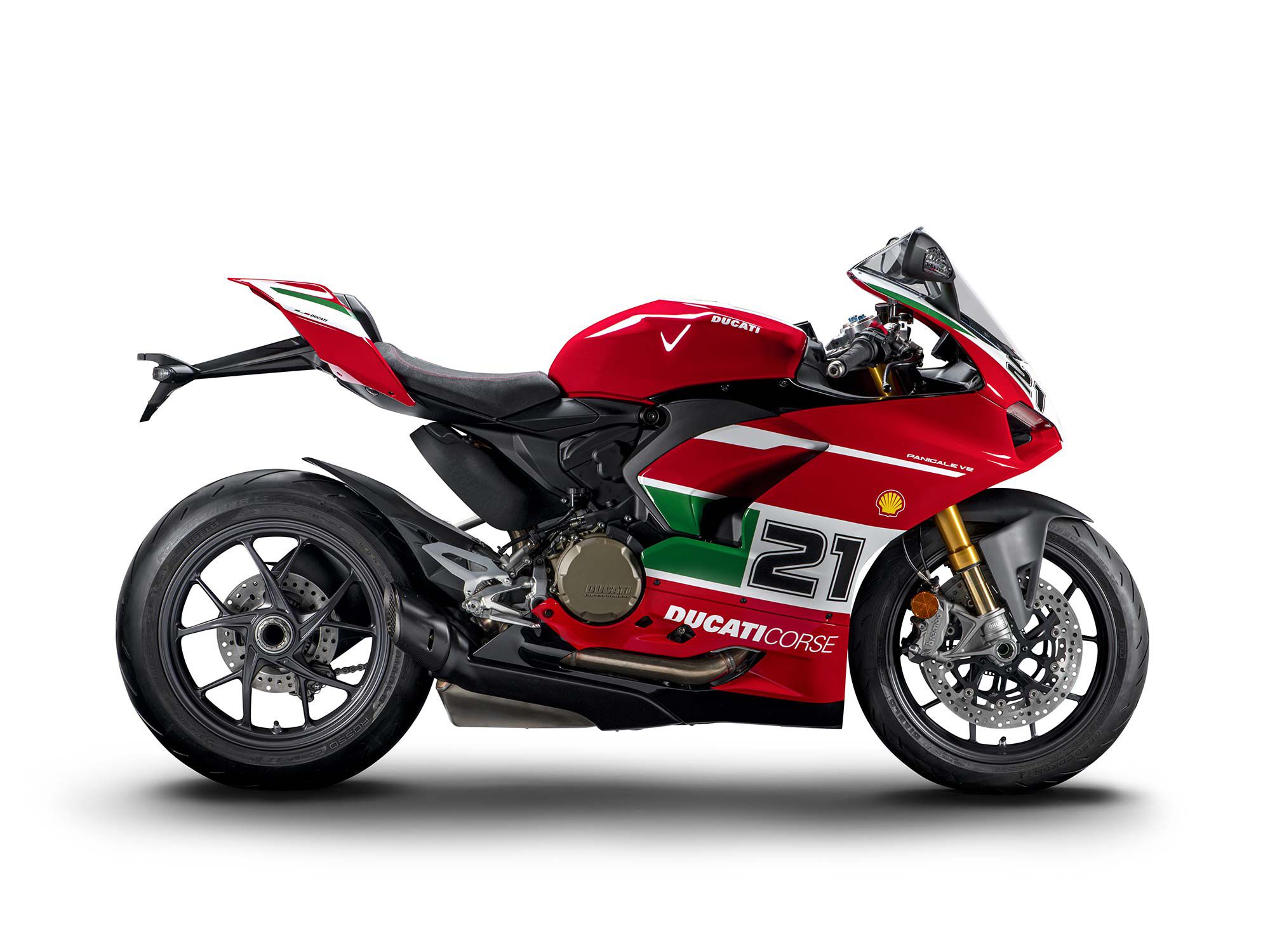
Ups
- Upgraded Öhlins suspension is worth every penny
- Beautiful paint and graphics
- Track-ready out of the crate
Downs
- Cockpit a bit tight depending on your size
- A bit pricey for a middleweight
Verdict
It’s the last of the V-twin superbikes in Ducati’s lineup, and the Panigale V2 Bayliss is also a gem. Not only does the Superquadro engine provide the right combination of power and performance for almost anyone, but the electronics and rider aids help almost anyone get the best out of themselves and the bike.
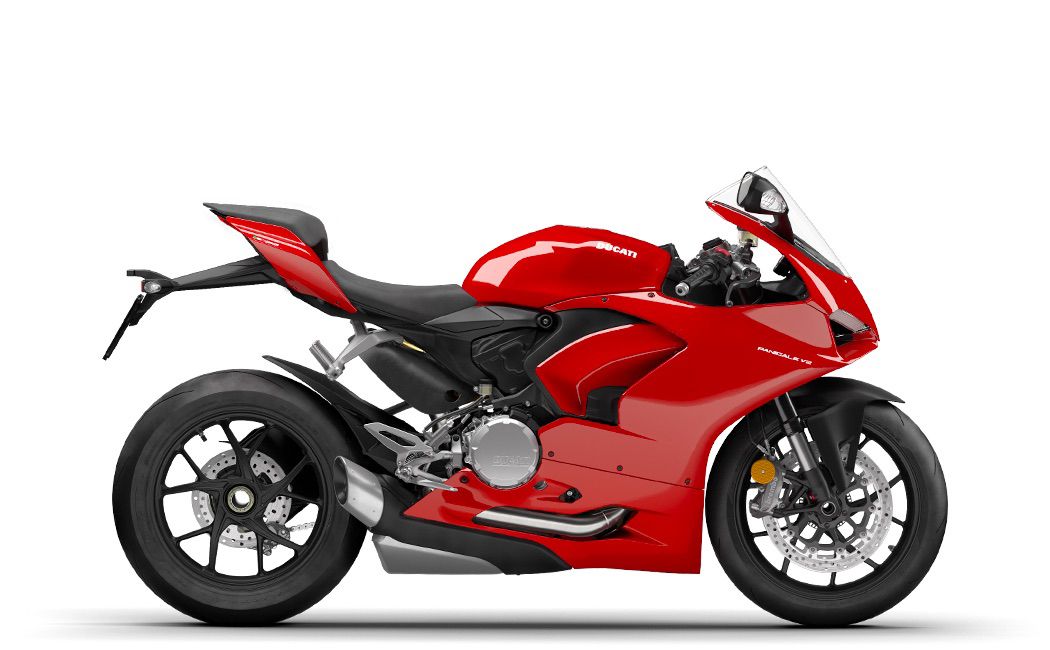
Overview
Ducati has won 14 rider’s and 17 manufacturer’s championships in World Superbike racing to date. But its deep involvement in racing meant that to stay competitive it had to change with the times, and it started producing V-4-powered superbikes back in 2018.
Luckily those same evolving rules mean that there is a place for Ducati’s Panigale V2 in Supersport competition. That means riders get an amazing trackworthy supersized supersport to play with, and Ducati gets to consider its V-twin legacy. Anyone looking for a turn-key trackday bike should consider this amazing machine.
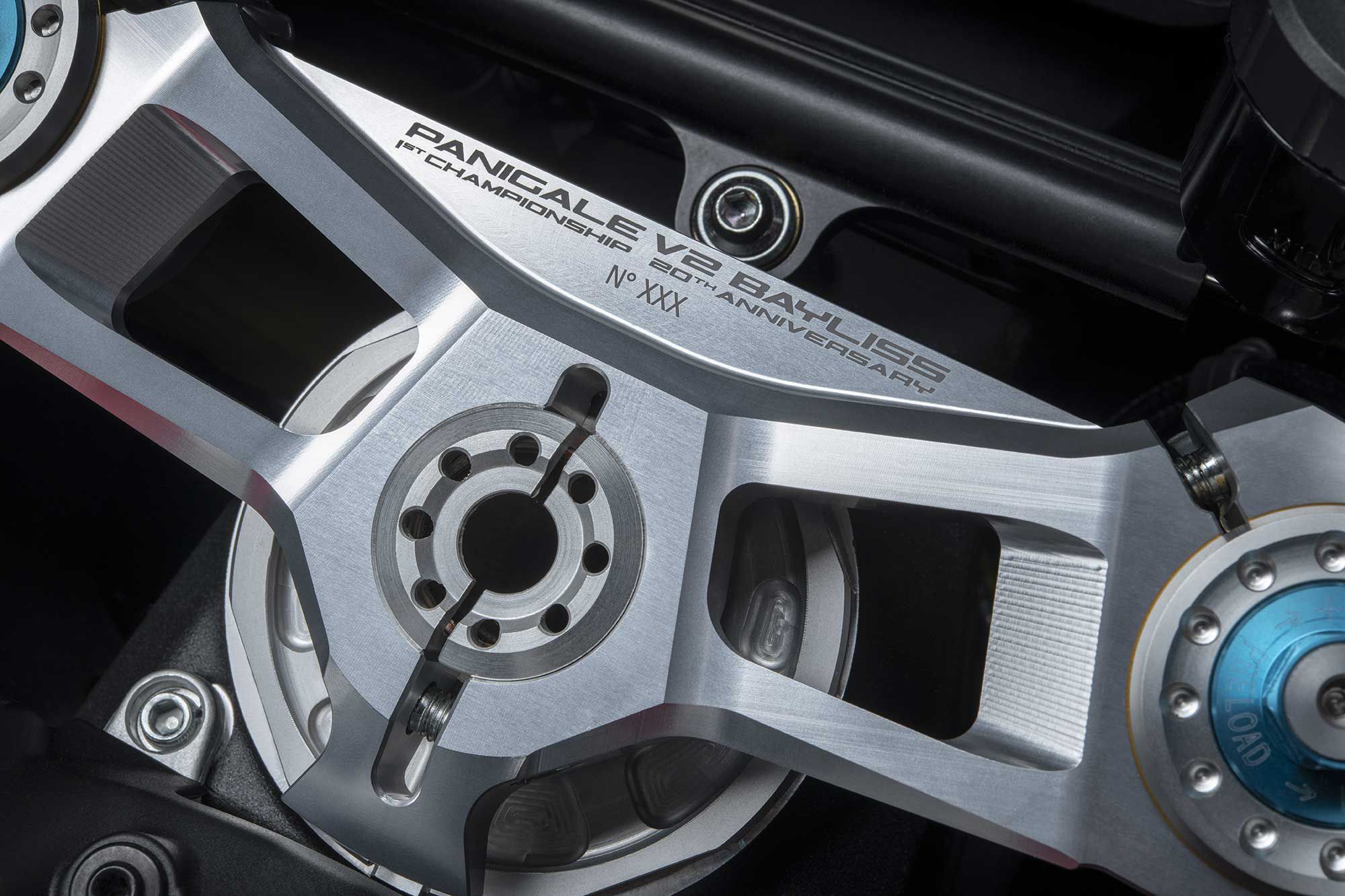
Updates for 2022
The Panigale V2 came out back in 2020 as the replacement for the Panigale 959 and was met with enthusiasm by the Cycle World staff. But for 2022, Ducati decided to use the opportunity to release the V2 Bayliss 1st Championship 20th Anniversary Edition seen here.
Key upgrades over the standard V2 include the Troy Bayliss livery and paint, Öhlins suspension front and rear, and an ultralightweight lithium battery as standard.
Pricing and Variants
There are now two versions of the V2; the standard model goes for $17,795, while this commemorative Bayliss edition will set you back $21,495.
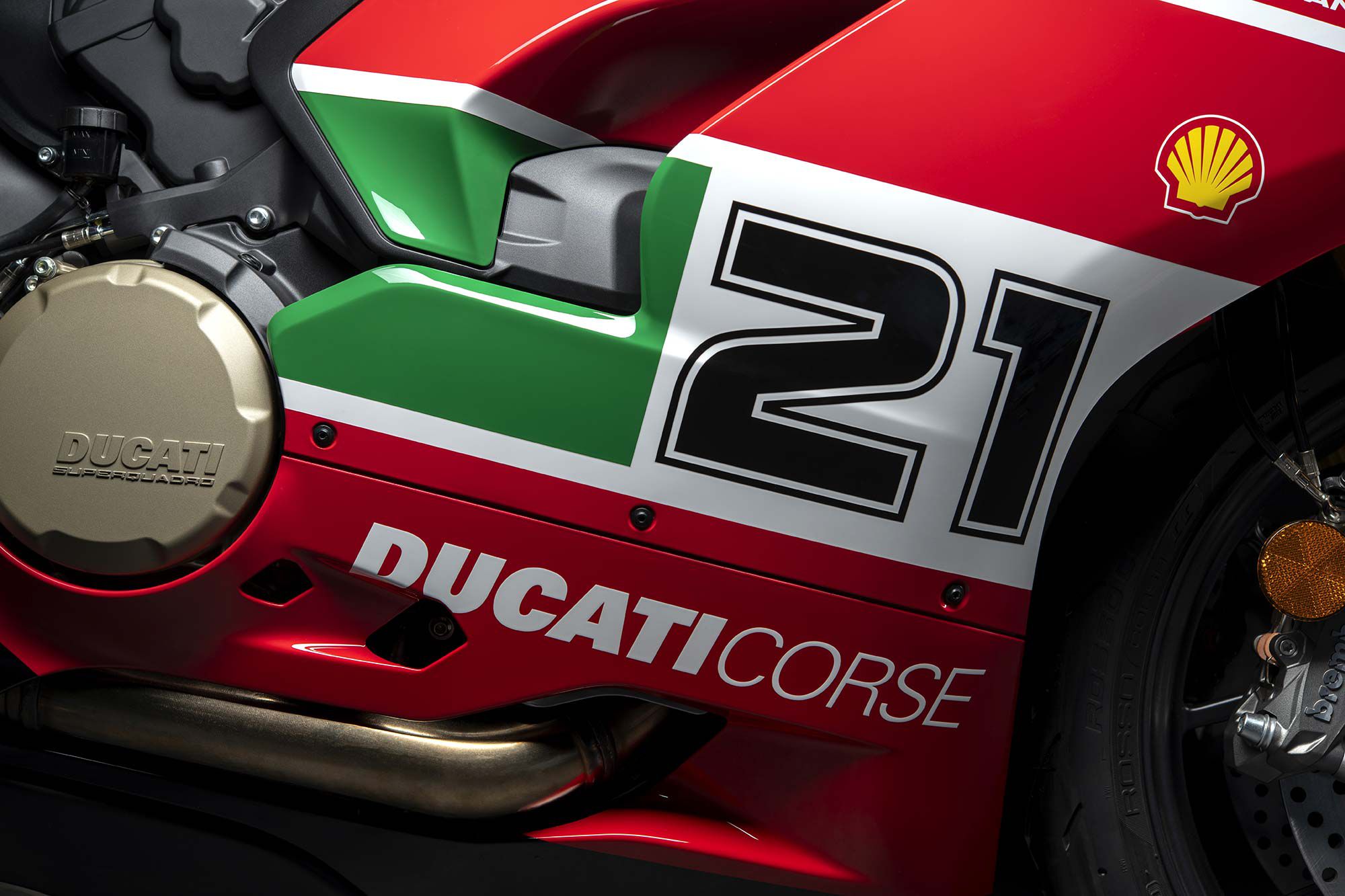
Competition
Arguably every sportbike in the market is a competitor, but let’s focus on the bikes that currently compete in World Supersport. Yamaha’s R6 has sadly slipped out of production, but Kawasaki’s ZX-6R carries on for 2023, as do Suzuki’s GSX-R600 and GSX-R750. You can add the MV Agusta F3, the recently teased Yamaha YZF-R9, and the KTM RC 8C to that list too.
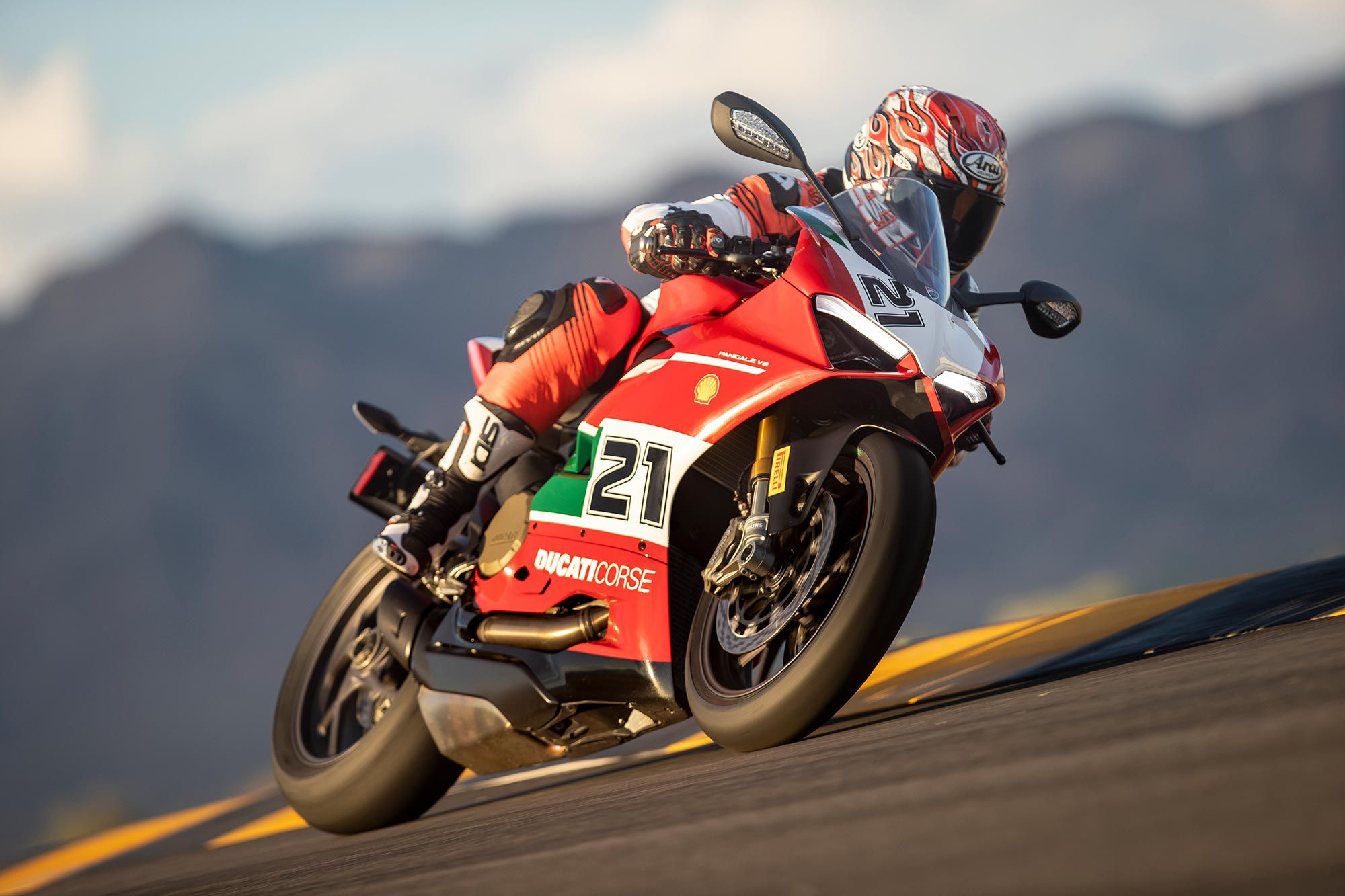
Powertrain: Engine, Transmission, and Performance
The Superquadro engine is a liquid-cooled 955cc 90-degree twin with four valves per cylinder and desmodromic valve actuation. Bore and stroke measure 100 by 60.8mm. The V2 cranks out 132.6 hp at 10,730 rpm, and 67.05 lb.-ft. of peak torque at 9,070 rpm on the Cycle World dyno. Power goes through a six-speed transmission via a wet clutch with slipper and assist functions and hydraulic actuation.
Induction is through a pair of throttle bodies with elliptical bores the equivalent of 62mm in diameter. The throttle bodies are controlled by full ride-by-wire operation that can control each independently. At the other end, a 2-into-1-into-2-into-1 exhaust system with a pair of catalytic converters gets rid of the burned mixture through a stubby little silencer.
“The V2 displayed impressive, utterly complete composure right out of pit lane,” Blake Conner said in his First Ride Review. “The combination of the V-twin’s smooth power delivery and the electronics’ optimization of traction and drive allowed instant confidence, something that doesn’t usually occur on an open-class superbike.
“On track, keeping the engine spinning above 6,000 rpm is key as there is a pronounced dip in power around the 5,250 rpm mark. Lapping a track, it’s easy enough to keep the revs up, but also made me wonder how it would feel on the street. From 6,000 rpm on up, the power climbs in a linear manner right up to around 10K, where it feels like it gets a little boost, ripping through the last 1,500 rpm almost instantly, meaning the rider had better have a toe ready on the quickshifter to tap into the next gear.”
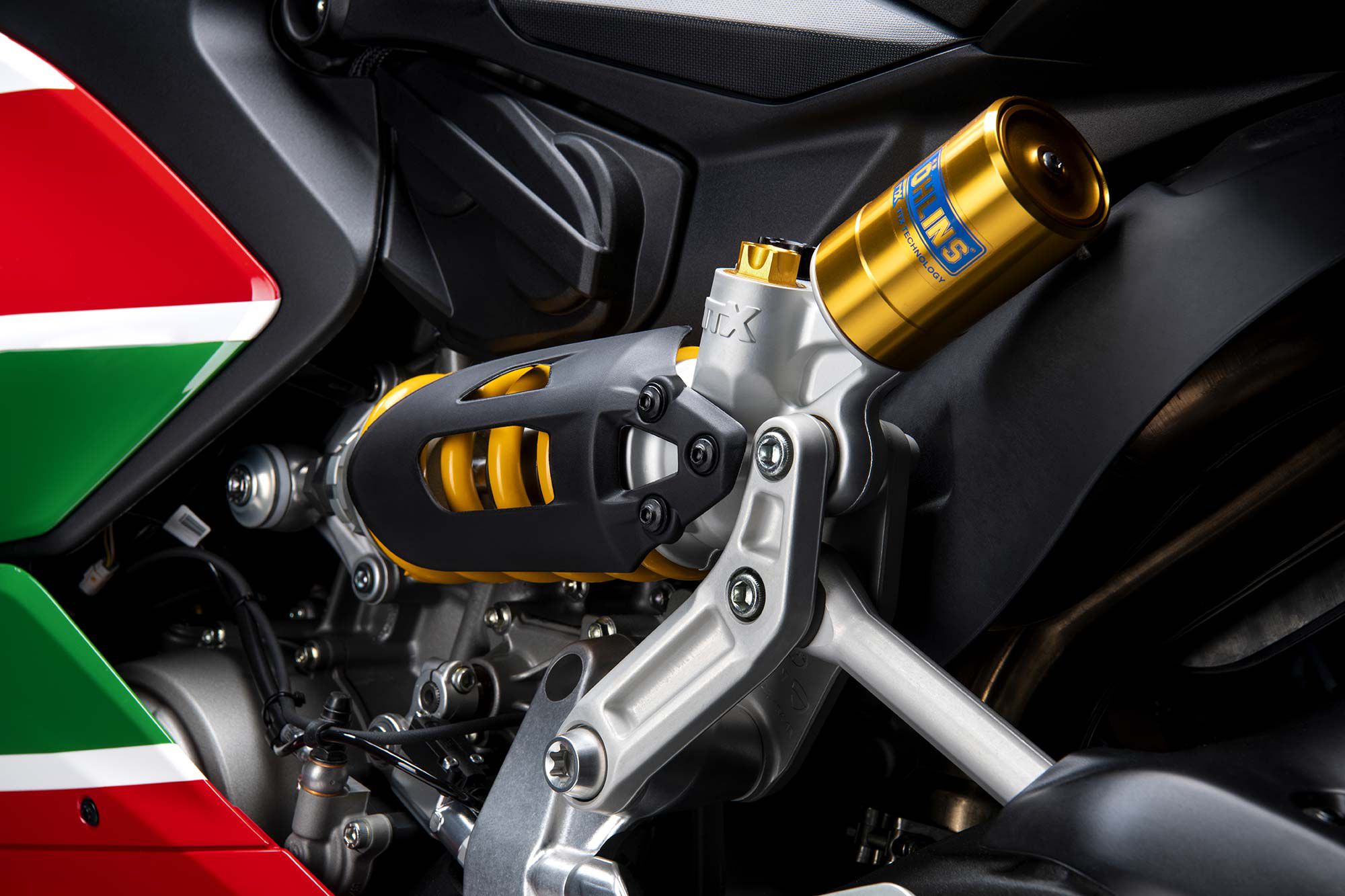
Chassis/Handling
The Bayliss, like the standard V2, has a cast aluminum monocoque frame and uses the engine as a stressed member. The steering head is set at 24 degrees with 3.9 inches of trail, and the wheelbase measures 56.6 inches. What really separates the Bayliss from the standard V2 is the suspension. Up front is a fully adjustable Öhlins NIX 30 inverted fork with 43mm stanchions and 4.7 inches of travel. At the rear is an offset-mounted, fully adjustable Öhlins TTX 36 shock with 5.1 inches of rear-wheel travel. An Öhlins steering damper is part of the bike’s special equipment. The bike comes standard with Pirelli Diablo Rosso Corsa II tires, a 120/70-17 front and 180/60-17 rear.
“Turn-in is crisp and predictable; the combination of the slipper clutch and EBC help keep unwanted movement from the rear tire in check, so the chassis feels planted and ultra-stable,” Conner added. “With the safety net of a little bit of ABS at the front, trail-braking into the corner never felt like a balancing act with the front brake lever.”
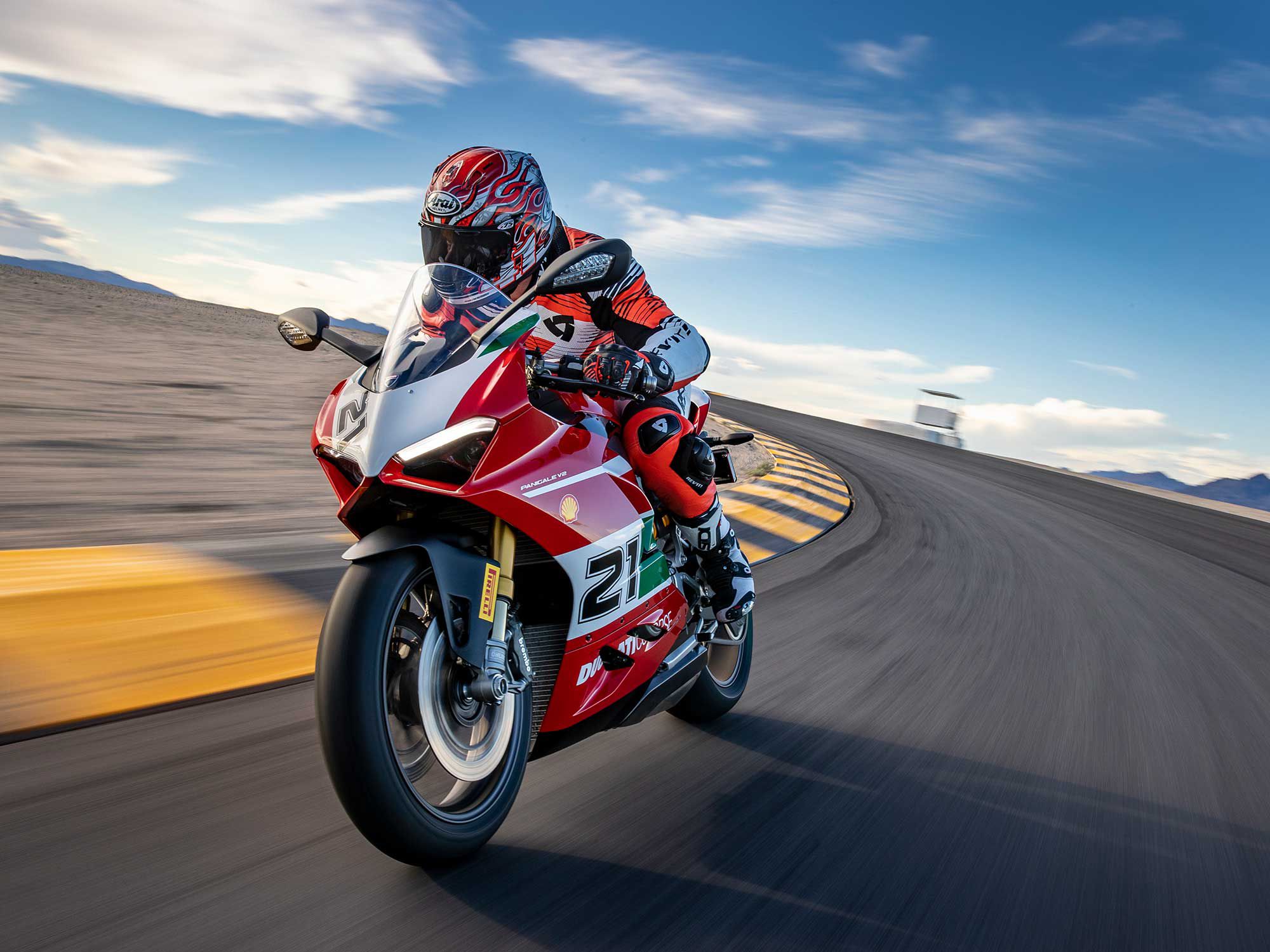
Brakes
Braking hardware is identical to the standard model V2, with a pair of Brembo Stylema M4.32 radial-mount four-piston calipers and 320mm semi-floating discs up front. The rear has a twin-piston Brembo caliper and a 245mm radially vented disc.
“As far as brakes are concerned,” Conner said, “the Brembo Stylema units are amazing components that make the V2 track-ready out of the crate. Feel at the lever is completely and totally predictable and consistent; stopping power comes in smooth and powerful without feeling grabby.”
Fuel Economy and Real-World MPG
Cycle World spent limited time on the street and didn’t record enough miles to get a good fuel-mileage reading.
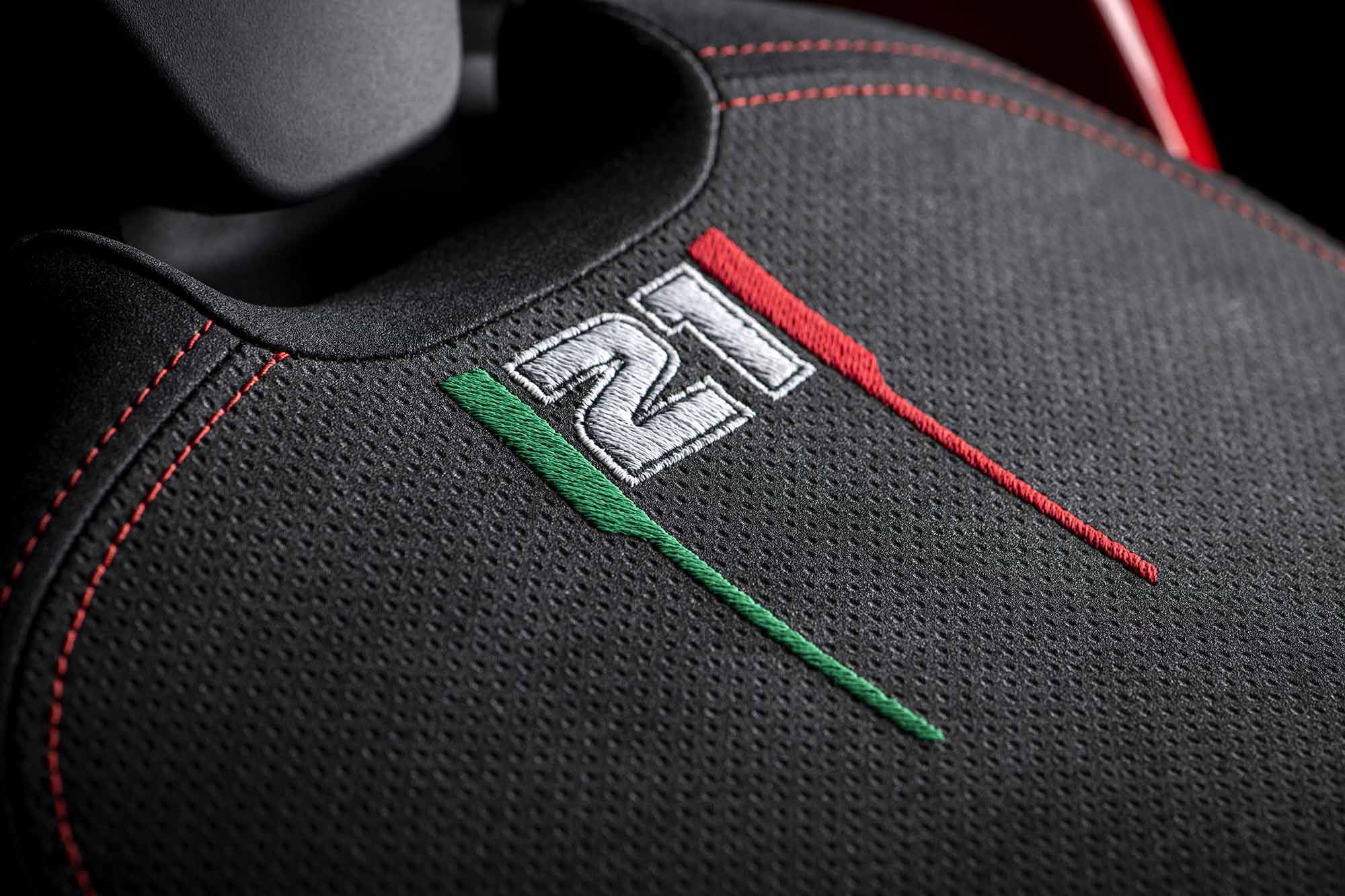
Ergonomics: Comfort and Utility
The V2′s cockpit is admittedly tight, and leaving riders nearing the 6-foot mark hoping for a little more room to move back in the saddle. Expect the rest of the rider triangle to be typical of a committed sportbike, which means on-track performance comes before outright comfort.
Electronics
The V2 uses a full ride-by-wire throttle and a six-axis IMU. There are three riding modes: Street, Sport, and Race. Each has a set of parameters that optimize the mode for certain conditions. There are presets for the engine’s power output, eight levels of DTC EVO 2 (Ducati Traction Control), four levels of DWC (Ducati Wheelie Control), three levels of EBC EVO (Engine Braking Control), and three levels of ABS Bosch Cornering EVO. All of these presets can also be overridden to fit rider preferences; it’s always possible to revert back to the defaults.
The Bayliss comes standard with an up-and-down quickshifter. A 4.3-inch full-color TFT display sits front and center, while full LED lighting is used.
Warranty and Maintenance Coverage
The Panigale V2 Bayliss comes with a 24-month unlimited-mileage warranty.
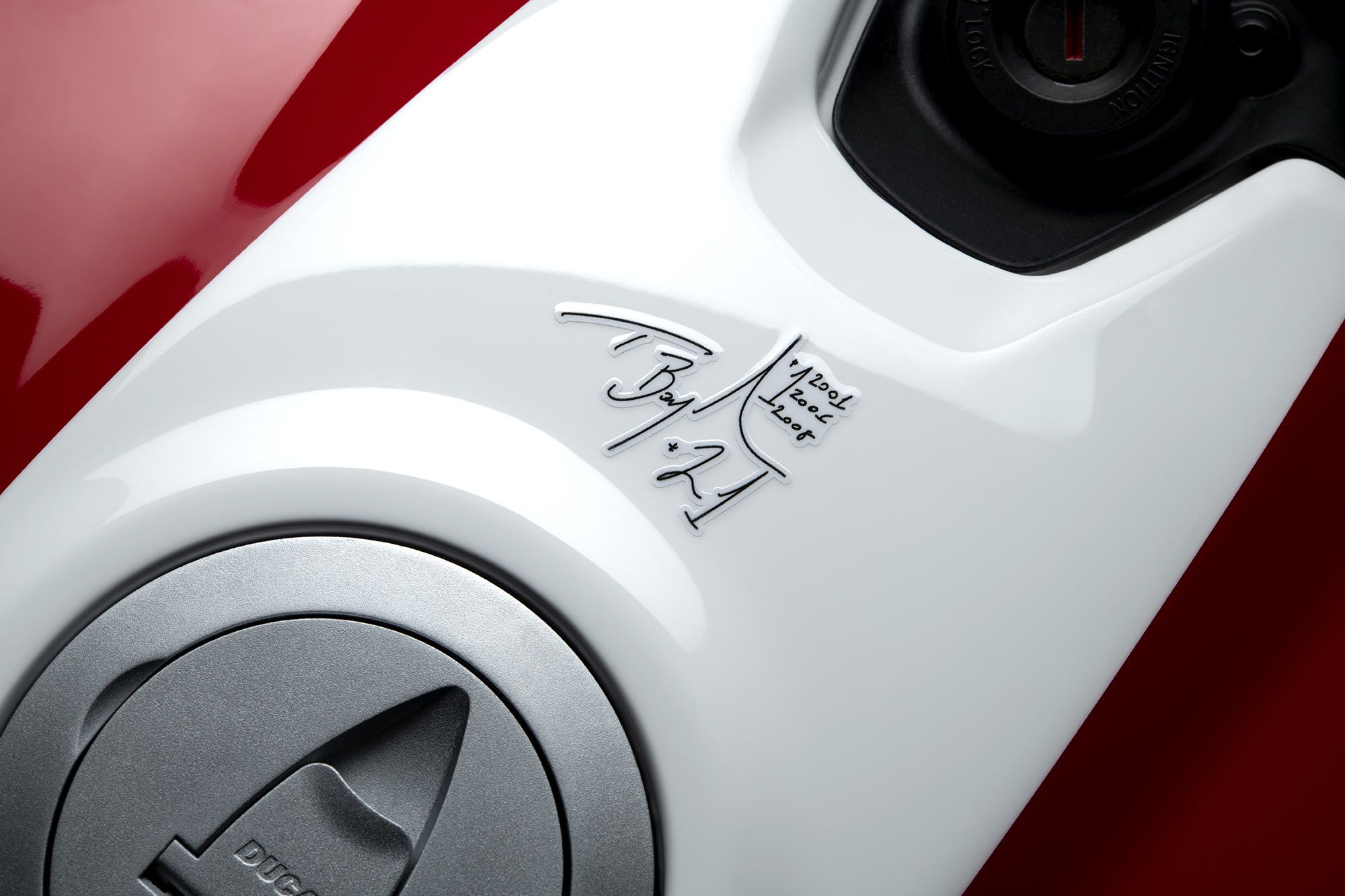
Quality
From our brief time with the Bayliss, the fit, finish, and build quality are top-notch.
2022 Ducati Panigale V2 Bayliss 1st Championship 20th Anniversary Specs
| MSRP: | $21,495 |
|---|---|
| Engine: | Superquadro liquid-cooled, 90-degree V-twin; 4 valves/cyl. |
| Displacement: | 955cc |
| Bore x Stroke: | 100.0 x 60.8mm |
| Compression Ratio: | 12.5:1 |
| Transmission/Final Drive: | 6-speed/chain |
| Cycle World Measured Horsepower: | 132.6 hp @ 10,730 rpm |
| Cycle World Measured Torque: | 67.05 lb.-ft. @ 9,070 rpm |
| Fuel System: | Electronic fuel injection; ride-by-wire |
| Clutch: | Wet, multiplate, slipper and assist function; hydraulic master |
| Engine Management/Ignition: | Electronic |
| Frame: | Aluminum monocoque |
| Front Suspension: | 43mm Öhlins inverted NIX 30, fully adjustable; 4.7 in travel |
| Rear Suspension: | Öhlins TTX 36 monoshock, fully adjustable; 5.1 in. travel |
| Front Brake: | Dual Brembo M4.32 4-piston calipers, 320mm discs w/ Cornering ABS EVO |
| Rear Brake: | 2-piston caliper, 245mm disc w/ Cornering ABS EVO |
| Wheels, Front/Rear: | Aluminum alloy; 17 x 3.5 in. / 17 x 5.5 in. |
| Tires, Front/Rear: | Pirelli Diablo Rosso Corsa II; 120/70-17 / 180/60-17 |
| Rake/Trail: | 24.0°/3.9 in. |
| Wheelbase: | 56.6 in. |
| Ground Clearance: | 4.9 in. |
| Seat Height: | 32.9 in. |
| Fuel Capacity: | 4.5 |
| Average MPG: | N/A |
| Cycle World Measured Wet Weight: | 451 lb. |
| Contact: | ducati.com |
Source: MotorCyclistOnline.com
